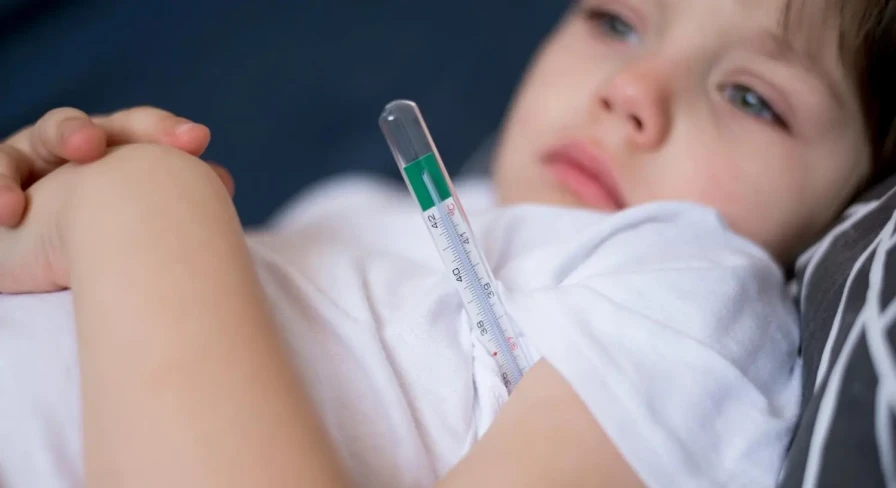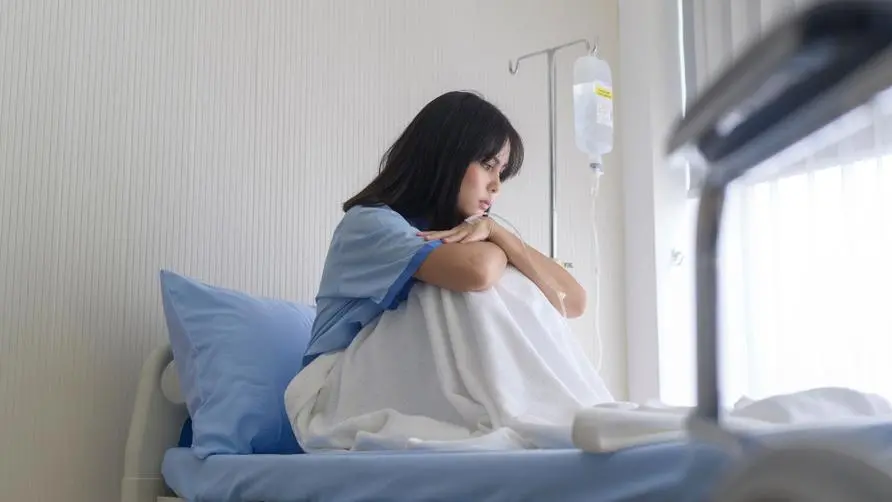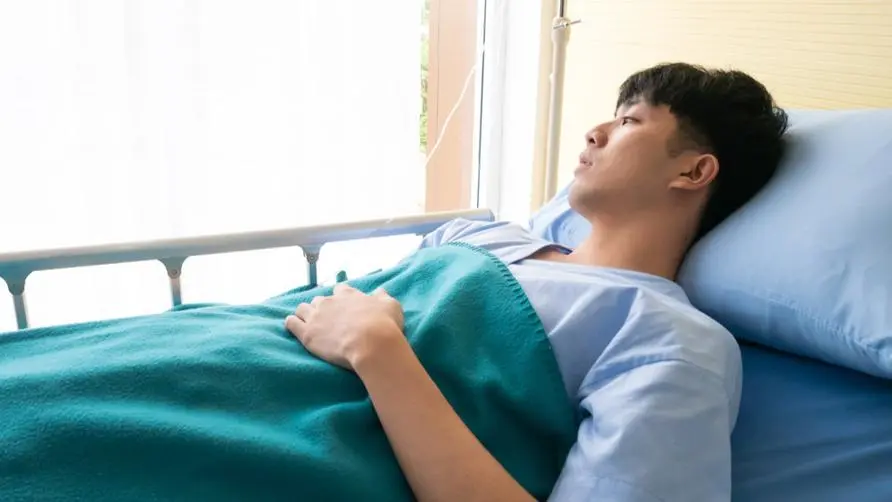Survival guidelines for the treatment of childhood acute lymphoblastic leukemia with trace amounts of residual cancer cells

Cancer has been among the top 10 causes of death in Taiwan for more than decades. Among cancer patients, there are a handful of little warriors, namely childhood cancer patients. Among childhood cancers, 33% are Pediatric Acute Lymphoblastic Leukemia (pALL). Unlike solid cancers, which have clear stages, blood cancers are systemic as soon as they occur. Fortunately, there are many new monitoring methods and treatment strategies for childhood acute lymphoblastic leukemia, such as trace cancer cell monitoring, chemotherapy, immune-targeted drugs, etc., which greatly improve the success rate of treatment, so that children with cancer will no longer have time to grow up!
What are the common symptoms of childhood acute lymphoblastic leukemia? Medical Inventory Common Warning Signs
Professor Wu Kangxi from the Department of Pediatric Hematology and Oncology of the Affiliated Hospital of Sun Yat-sen Medical University pointed out that among childhood leukemias, acute lymphoblastic leukemia (ALL) is the most common. The incidence rate is between birth and 15 years old, especially between 2 and 7 years old. The highest peak.
When their children are diagnosed with childhood acute lymphoblastic leukemia (pALL), many parents are unwilling to accept the fact of the disease and blame themselves for passing on bad genes to their children. However, this is not the case. Professor Wu Kangxi explained that childhood acute lymphoblastic leukemia (pALL) is neither hereditary nor contagious. The cause of childhood acute lymphoblastic leukemia (pALL) is currently being studied around the world, but the occurrence of childhood acute lymphoblastic leukemia (pALL) cannot yet be confirmed. Reasons why parents don’t have to blame each other or themselves.
Professor Wu Kangxi shared that clinically, many patients diagnosed with childhood acute lymphoblastic leukemia (pALL) were accidentally diagnosed during blood draws when they were hospitalized due to illness. Usually during blood tests, white blood cells (neutrophils), red blood cells, or platelets are detected. If 1 or 2 of them are abnormal, it may be leukemia. Often the patient’s white blood cell index is abnormal, and upon examination it is discovered that the patient has childhood acute lymphoblastic leukemia (pALL).
What are the common symptoms of childhood acute lymphoblastic leukemia (pALL)? How should parents pay attention at ordinary times? Professor Wu Kangxi raised the following common warning signs:
Fever: Blood cancer cells grow rapidly and destroy quickly, which will increase metabolism and cause fever. In addition, because normal white blood cells cannot form, resulting in poor resistance, it is also easy to develop fever due to infection.
Symptoms caused by anemia: Pale face is the most common symptom. Severe anemia can cause breathlessness when walking.
Easy bleeding: Due to low platelet count, blood cannot coagulate normally, and bruises or bleeding spots may easily appear.
Bone pain: Children sometimes cannot express it, but just don’t want to stand or walk, or walk with a limp. This symptom is often misdiagnosed as growing pains. The reason for bone pain in patients with blood cancer is that cancer cells in the bone marrow begin to invade outwards, the bone marrow swells, and the periosteum is stretched, causing pain.
Organ enlargement: Parents may find that their children have a large belly or a lump in their neck. The reason is that blood cancer cells have invaded the liver, spleen, lymph glands, thymus, etc., causing organ enlargement.
If you have any of the above symptoms, you should suspect leukemia. Take blood for careful examination. The more symptoms you have, the higher the possibility of leukemia.
Chemotherapy for acute lymphoblastic leukemia is mainly divided into three major stages, with a maintenance period of up to 3 years.
However, with the advancement of medical technology, childhood acute lymphoblastic leukemia (pALL) is no longer an incurable disease. Professor Wu Kangxi analyzed that the treatment of childhood acute lymphoblastic leukemia (pALL) is mainly divided into three stages:
Induction: The main hope is to maximize the eradication effect on cancer cells and avoid the occurrence of drug-resistant cancer cells. Using high-dose chemotherapy as the main weapon, the treatment goal is to reduce cancer cells to less than 0.01% (complete remission means that the cancer cells are undetectable, not completely disappeared) before the goal is achieved.
Consolidation treatment period (consolidation): The goal is to kill the remaining cancer cells. This stage uses chemotherapy drugs that are different from those in the induction stage to defeat the remaining cancer cells to consolidate the state of remission and prevent recurrence.
Maintenance: For patients with different risks of recurrence, different dosage courses of treatment are given to avoid the possibility of recurrence. Maintenance treatment is performed with outpatient chemotherapy, and the treatment duration must be maintained for 2 and a half to 3 years.
It is worth noting that in order to prevent cancer cells from metastasizing to the brain, drugs need to be administered from the spine during treatment, which is called central nervous system prophylaxis (CNS prophylaxis). All children with cancer must receive prophylactic intraspinal chemotherapy injections to prevent central nervous system invasion and metastasis, and those with Philadelphia chromosome mutations can add targeted drugs to the treatment course.
Guidelines for incorporating trace amounts of residual cancer cells into allogeneic stem cell transplantation for children with cancer are expected to be cured
When childhood acute lymphoblastic leukemia (pALL) develops, it is estimated that there will be approximately 10 to the 12th power of cancer cells in the body, which is approximately 1 trillion cancer cells. Director Weng Defu of the Children’s Hematology Oncology Department of the Hospital Affiliated to Sun Yat-sen Medical University explained that after receiving treatment, patients will undergo further bone marrow examination. The traditional method is to count 100 cells under a microscope. If 100 white blood cells cannot see one cancer cell, The patient’s disease is considered to be well controlled. However, the sensitivity of this approach is only 1%, which means that the cancer cells only decrease by 1%; but the number of cancer cells in the body may be 0, or it may be 10 to the 10th power.
With the advancement of measurement technology, flow cytometry can detect 10,000 cells, which is 10 to the 4th power. If we count 10,000 cells and cannot see them, it means that the number of cancer cells has been lower than 1/10,000 at the time of onset, which means that the patient’s cancer cells are already less than 10 to the 8th power. Taiwan’s childhood cancer treatment guidelines will include Measurable Residual Disease (MRD) in the treatment guidelines in 2021. During chemotherapy, the treatment direction can be adjusted based on the amount of residual cancer cells in the bone marrow. It is expected that chemotherapy will be adjusted according to the situation. Strength, reduced side effects. Overall, about 80% to 90% of children with cancer are expected to be cured after completing treatment.
Director Weng Defu mentioned that there are international studies that show that children with acute lymphoblastic leukemia (pALL) usually start treatment after diagnosis, and will have another bone marrow examination on the 15th and 35th days of treatment respectively. Director Weng Defu said: “I usually tell my patients that this is the midterm exam and the final exam of treatment. The midterm exam is on the 15th day of treatment. The number of cancer cells must be less than 1%, so that the midterm exam can achieve full marks; the final exam is On the 35th day, the cancer cells must be less than 0.01% to achieve a perfect score.” For the control of childhood acute lymphoblastic leukemia (pALL), Taiwan has complete treatment guidelines and multiple treatment options. Among them, those with Philadelphia chromosome mutations who have a high risk of recurrence and 10% to 20% of children with cancer who unfortunately have recurrence often require allogeneic stem cell transplantation (commonly known as bone marrow transplantation) in order to more actively control the disease.
Director Weng Defu added that it was mentioned before that the chemotherapy during the introductory period was already very strong. If the patient’s results are still very poor, it means that the patient needs to make up the exam. However, the cancer cells are resistant to the originally used chemotherapy drugs. If chemotherapy is continued, , the cancer cells may be reduced, but they will soon face the crisis of recurrence. Since the advent of new immune-targeted treatments, it is equivalent to a new and effective attack on cancer cells, making cancer cells less likely to develop drug resistance, allowing children with acute lymphoblastic leukemia (pALL) to successfully receive allogeneic stem cell transplantation. In this way, life-saving time can be bought.
Health insurance benefits immune targets and multiple drugs for children with refractory or relapsed acute lymphoblastic leukemia
Director Weng Defu reminded that the current health insurance payment regulations for immune-targeted drugs are for patients with refractory or relapsed childhood acute lymphoblastic leukemia (pALL) to receive 2 courses of treatment, with a 2-week break between treatments. The purpose is to allow the body’s immunity to The system can rest and recover. Following the course of treatment, allogeneic stem cell transplantation is the direction of the entire treatment plan.
Director Weng Defu shared a successful case of treatment. There was a child who was diagnosed with childhood acute lymphoblastic leukemia (pALL) and had other brothers and sisters at home. The first two stages of treatment were originally very smooth, but in the maintenance period, because he did not implement his daily life Care, because of the inconsistency in treatment due to colds, treatment becomes very irregular. Unfortunately, the patient relapsed within half a year after completing the treatment. At that time, the immune-targeting drugs had not yet been covered by the health insurance, so he still followed the traditional method of strong chemotherapy and redirection treatment. During the mid-term exam, he was diagnosed with cancer. The cell count was 15%, and during the final exam there were still 6% cancer cells, which was very unsatisfactory.
According to past experience, such childhood acute lymphoblastic leukemia (pALL) patients are difficult to cure. However, during the treatment process, the National Health Insurance will pay for immune-targeted drugs. After the patient found out that the final exam result was not good, he quickly applied for it. Immune-targeted drugs. Surprisingly, after the patient completed the first stage of immunotherapy, the bone marrow examination could not detect trace residual cancer cells (MRD) and achieved complete remission. Since the donor of allogeneic stem cells was his father, he could Quickly connected to allogeneic stem cell transplantation, the patient recovered smoothly. He is currently in elementary school and has completed treatment for 4 or 5 years.
Director Weng Defu emphasized that in patients with childhood acute lymphoblastic leukemia (pALL), before allogeneic stem cell transplantation, immunotherapy drugs covered by health insurance can be used to destroy cancer cells and reduce the bone marrow trace residual cancer cells (MRD) to less than 0.01% to enhance stem cells. The effectiveness of transplantation and the prevention of recurrence allow sick children to regain their health and families to get back on track and move towards a bright future together.





